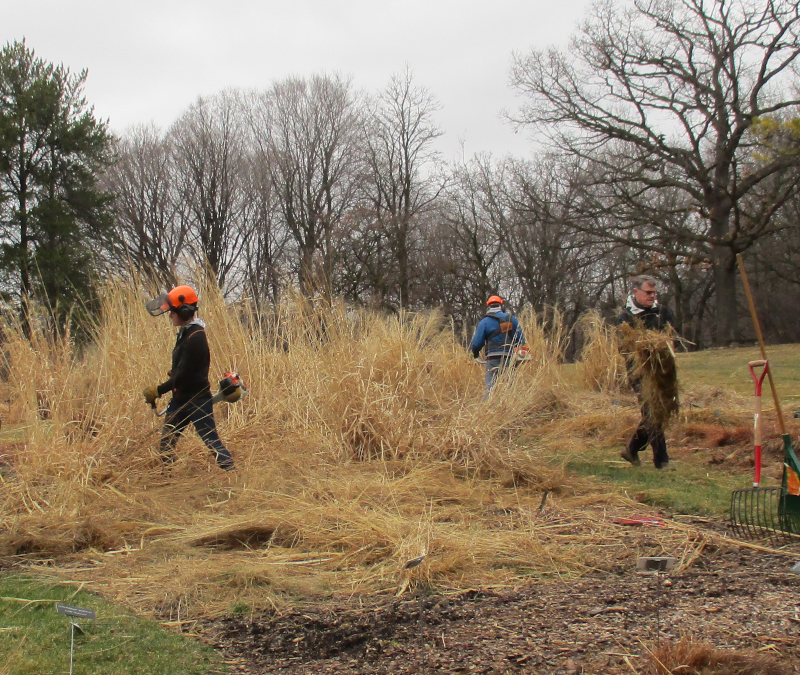Chapter 4. Planting, Maintenance, and Management
4.2 Maintenance
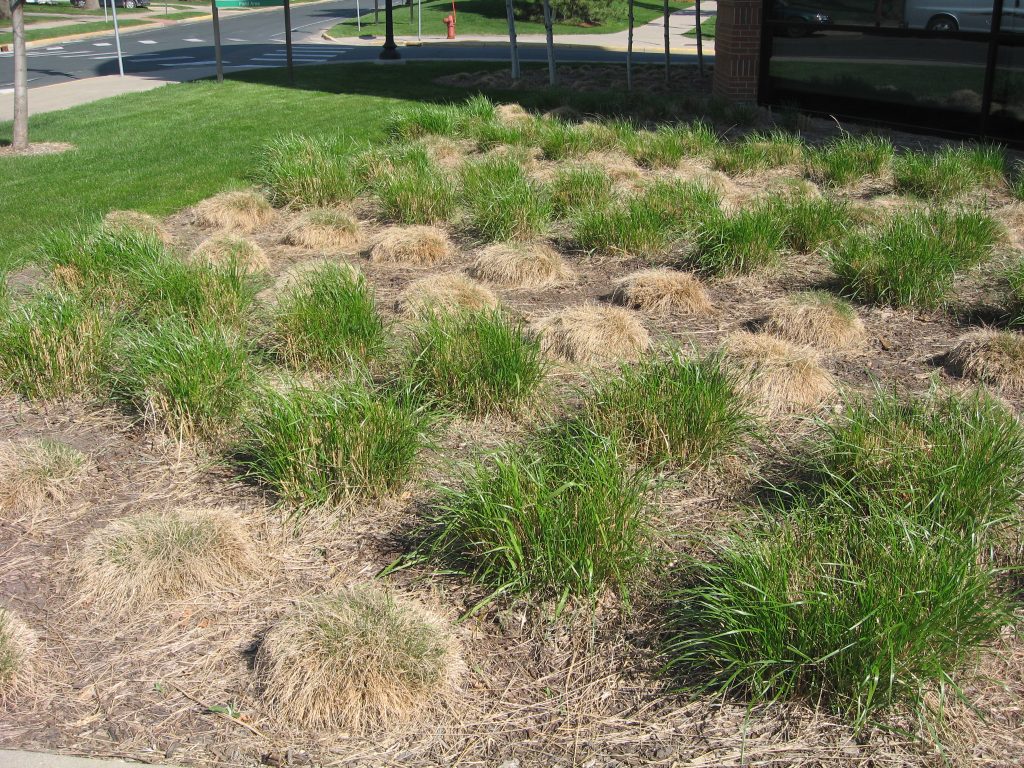
Removing Old Growth
Grasses require the removal of old tops, or previous year’s growth, in early spring. This can be done by cutting back or burning grasses. The best time of year to remove old growth is very early in the spring before new growth has started. Grass plants add interesting shapes to the landscape and provide shelter for various kinds of wildlife during the winter, so it is important to wait to remove old growth until the spring.
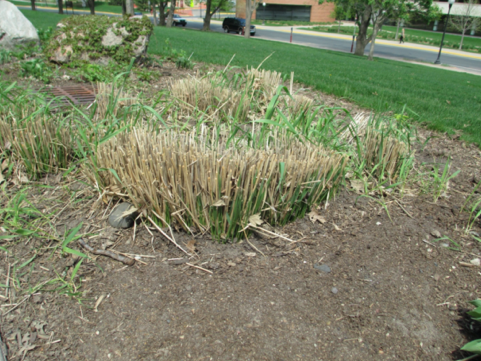
Cutting Back
The type of tool you use to cut back grasses depends on the size of the planting. Hand pruning shears or an electric trimmer can be used for small to medium sized plantings. Larger plantings, like restorations, may require larger implements, like mowers or haying machinery.
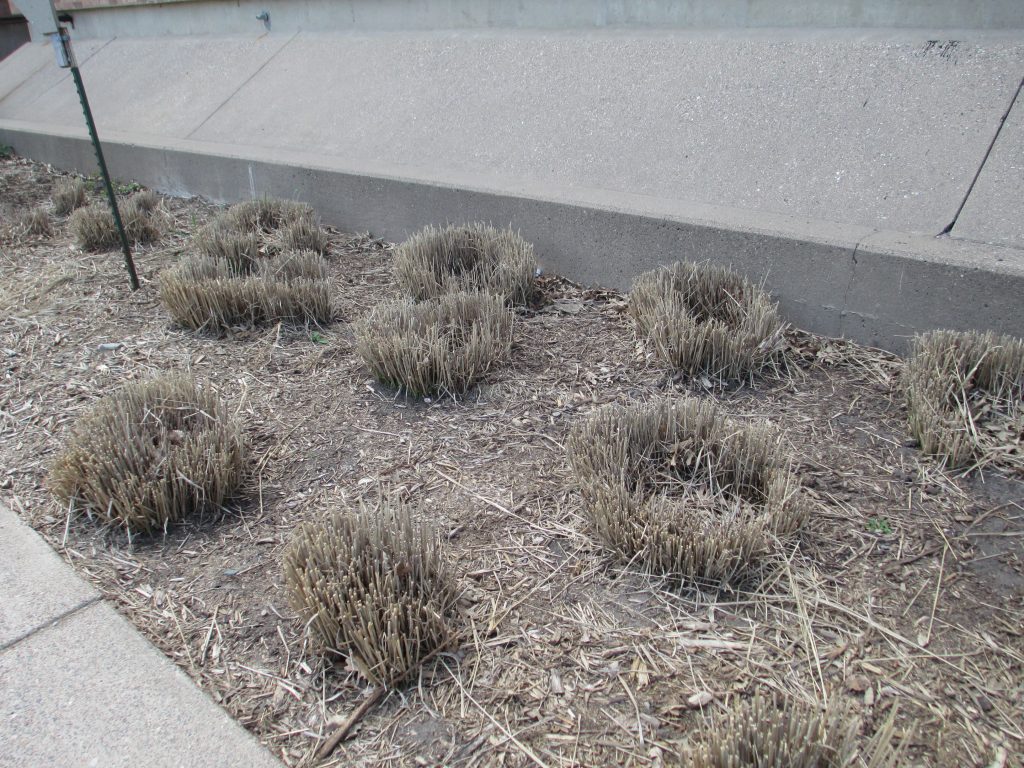
Burning
Native prairie grasses evolved with periodic fires so they respond well to prescribed burns. Seed set and vigor often increase with annual burning. However, insects and mammals may be killed during burns, so it is recommended to burn only a portion of a prairie or planting at a time. The Minnesota Deparment of Natural Resources, and the Minnesota Department of Agriculture provide resources on prescribed burning.
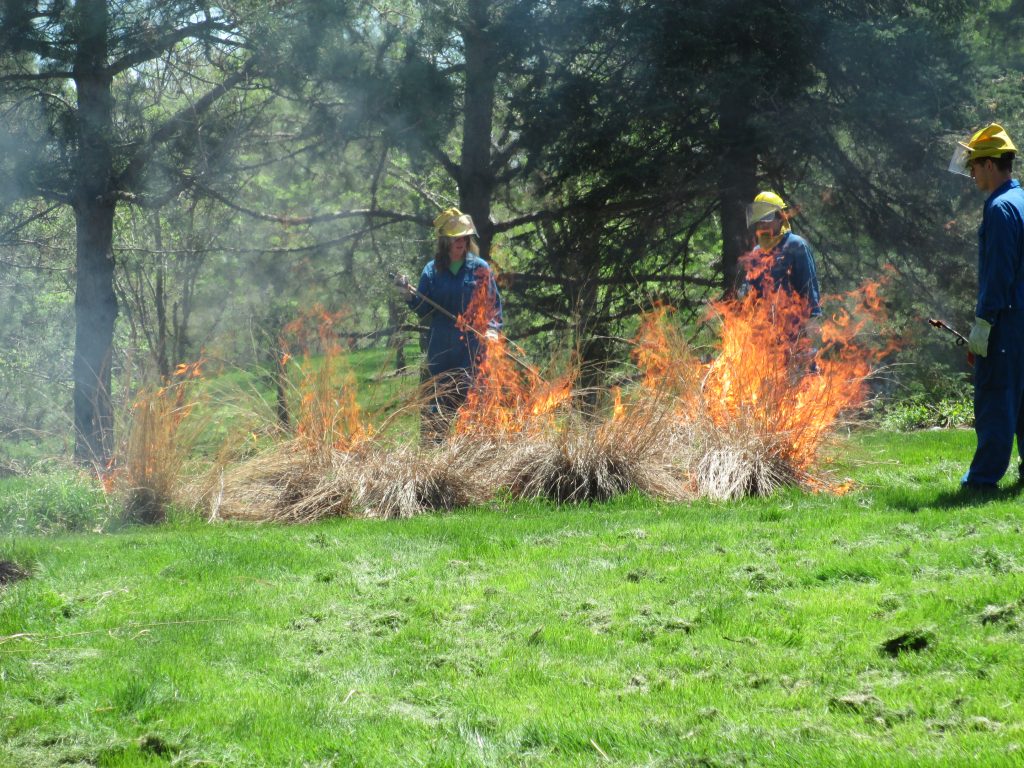
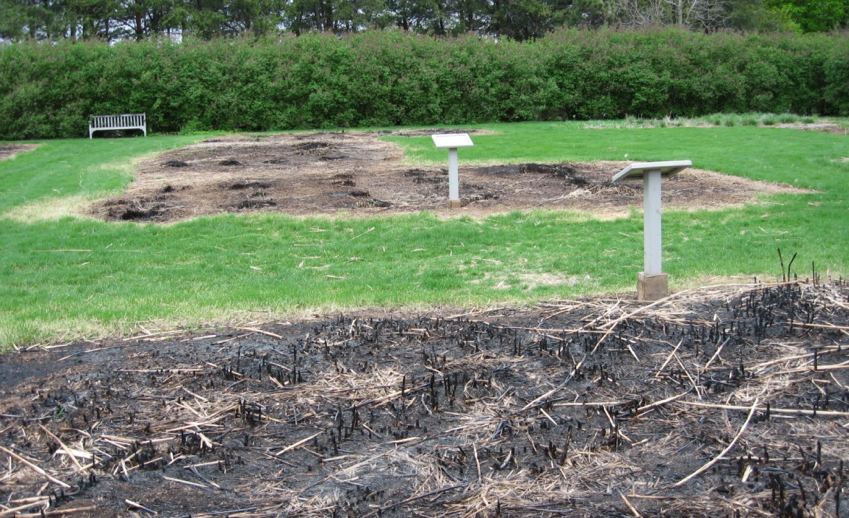
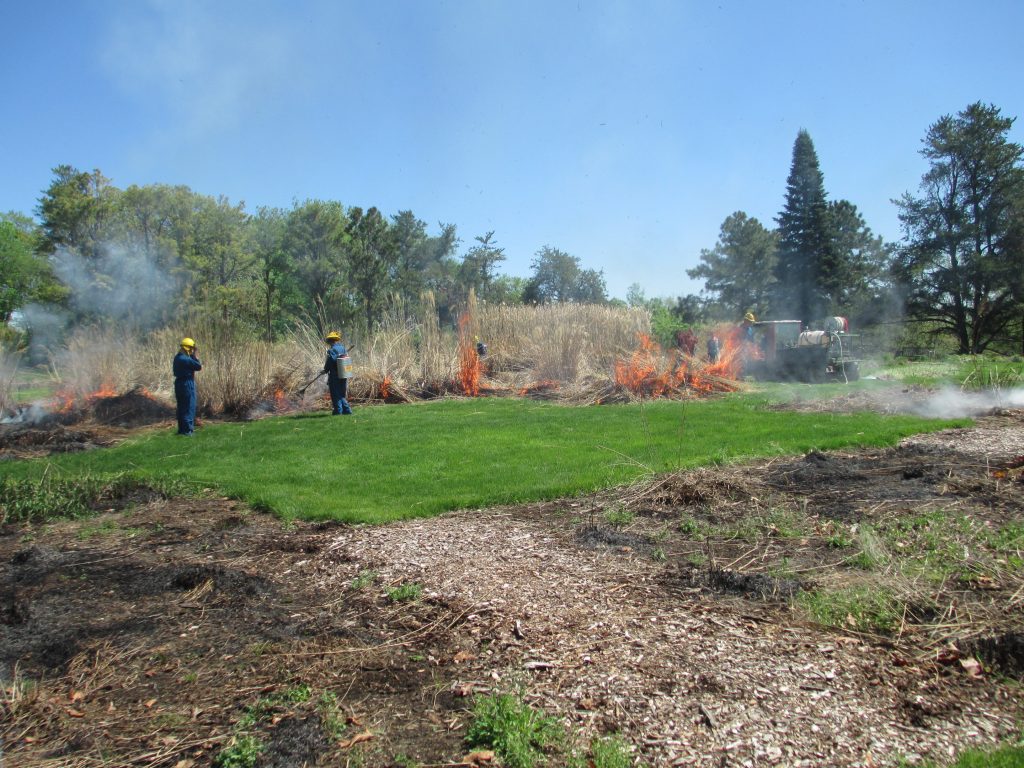
Crown Division
As bunch grasses age and grow outward, the old growth in the middle often dies, which can give large bunch grasses an uneven, doughnut, or unhealthy appearance. A great way to invigorate these older plants is to divide them, discarding any dead centers or old growth, and transplanting the newly divided crowns. In early spring as new growth starts, you can determine the alive material and easily discard the dead portions. To divide the plant, use a sharp spade or knife to chop through the crown. Remove the old, dead growth, and replant the crown sections. After replanting, water generously until the grass is established.
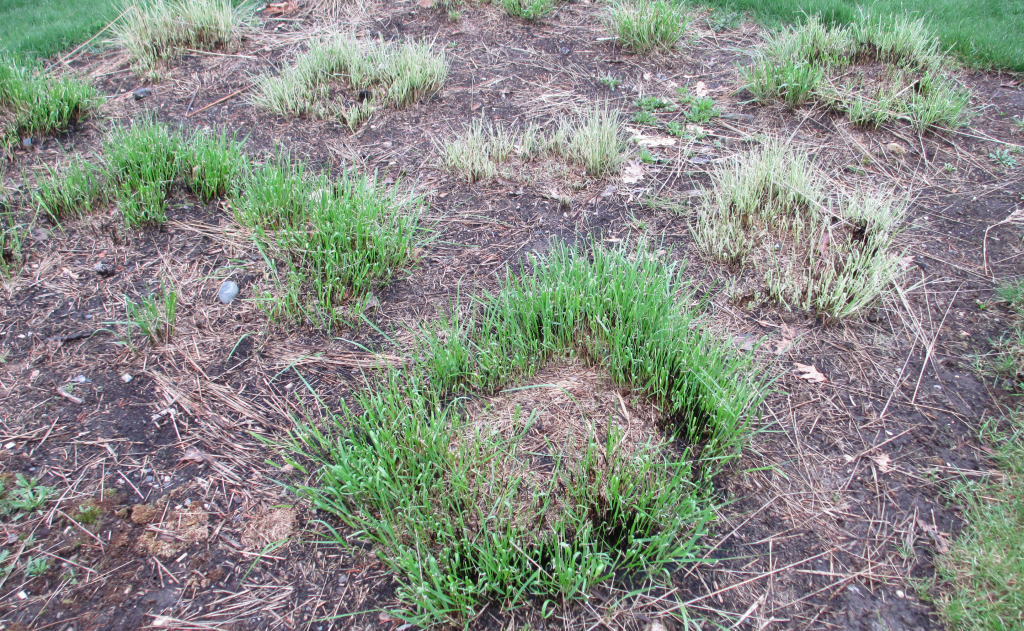
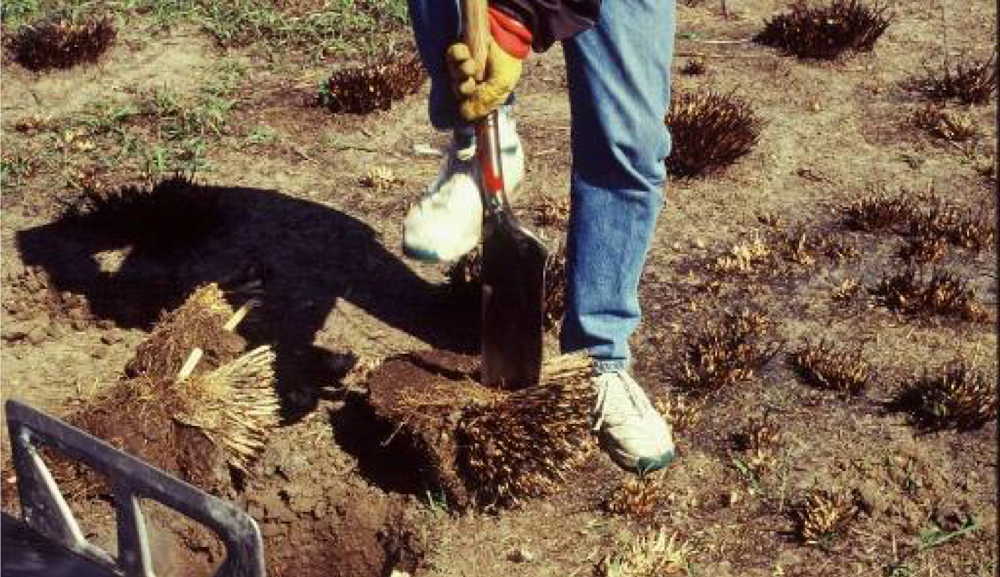
Lepidoptera-Friendly Management
Many butterflies and moths that feed on grasses as larvae overwinter in the larval stage, and so are vulnerable to fire. If you suspect that you have skippers overwintering in your planting, consider cutting back grasses instead of burning. If fire management is a must, burn only a portion of the planting, leaving a refuge for skippers or other invertebrates that may be taking shelter in the grasses.
